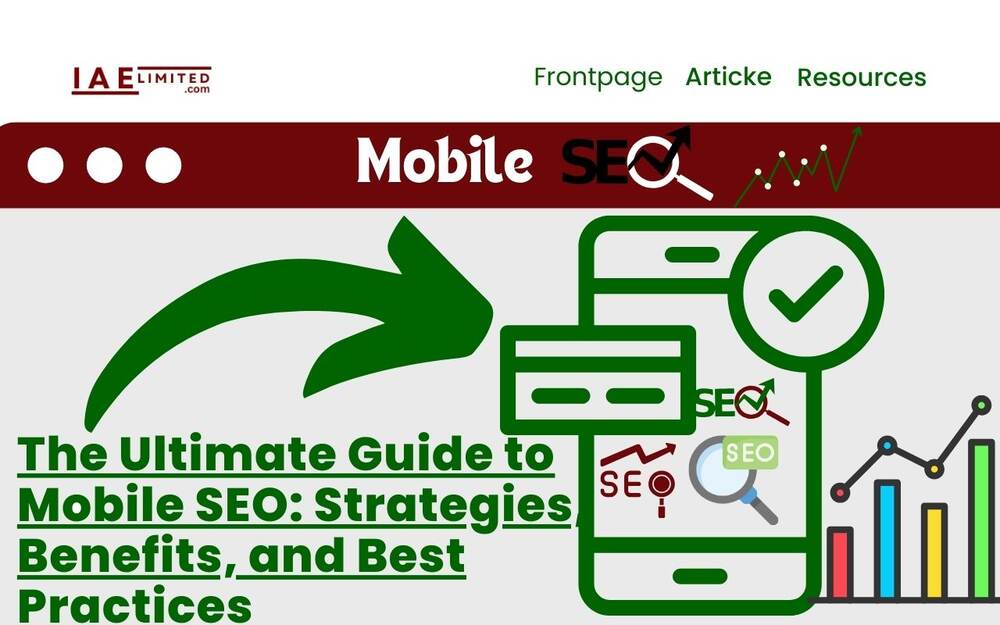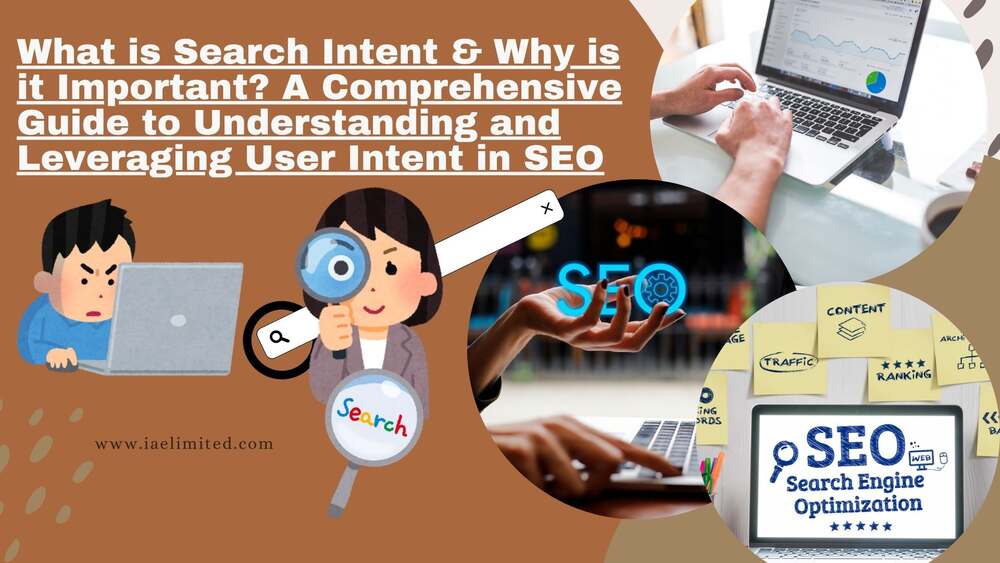
In today’s digital landscape, mobile SEO has become a critical component of any successful online strategy. With an increasing number of users accessing websites via mobile devices, ensuring your site is optimized for mobile is no longer optional—it’s essential.
This comprehensive guide will explore what mobile SEO is, why it matters, best practices, techniques, and much more to help you enhance your mobile presence. In case you missed it, we recently published a post on, how to do seo for beginners: a comprehensive guide.
This article will help you learn how to improve your website to increase its visibility when people search for products or services related to your business on search engines like Google, Bing, or Yahoo.
What is Mobile SEO?
Table of Contents
Mobile SEO refers to the process of optimizing your website to ensure that it performs well on mobile devices such as smartphones and tablets. Unlike desktop SEO, which focuses on optimizing for larger screens and more robust processing capabilities, mobile SEO is designed to improve the user experience on smaller screens, slower networks, and touch-based interfaces.
Key Differences Between Mobile and Desktop SEO
- Screen Size and Usability: Mobile devices have smaller screens, so content must be easily readable without excessive zooming or scrolling. Desktop SEO often involves optimizing for larger displays and more complex navigation systems.
- Load Times: Mobile devices typically have slower internet connections compared to desktops. Mobile SEO emphasizes faster load times to reduce bounce rates and improve user experience.
- Touch vs. Click: Mobile SEO needs to account for touch interactions, ensuring that buttons and links are easy to tap, whereas desktop SEO focuses on clicks and hover effects.
Benefits of Mobile SEO
Enhanced User Experience
Mobile SEO aims to provide a seamless user experience by optimizing for the unique characteristics of mobile devices.
- Faster Load Times: Optimizing images, leveraging browser caching, and minimizing JavaScript can significantly speed up your site, making it more user-friendly.
- Improved Navigation and Usability: Mobile-friendly designs, such as simplified navigation menus and larger touch targets, make it easier for users to interact with your site.
Increased Visibility and Traffic
With more users searching on mobile devices, mobile SEO can enhance your site’s visibility in search results.
- Higher Search Rankings: Search engines, particularly Google, prioritize mobile-friendly websites in their rankings. A well-optimized mobile site can lead to higher positions in search results.
- More Organic Traffic: By ranking higher in mobile search results, you can attract more visitors to your site.
Higher Conversion Rates
Mobile SEO can significantly impact your conversion rates by providing a better user experience.
- Mobile-Friendly Design: Responsive design ensures that your site adapts to different screen sizes, leading to a more engaging experience and higher chances of conversion.
- Easy Checkout Processes: Simplified forms and streamlined checkout processes on mobile can reduce cart abandonment and increase sales.
Best Practices for Mobile SEO
Responsive Web Design
Responsive design ensures that your website adjusts seamlessly to various screen sizes, providing an optimal viewing experience on both mobile and desktop devices.
- What Is Responsive Design? Responsive design uses CSS media queries to automatically adjust your site’s layout based on the device’s screen size and resolution.
- Benefits for Mobile Users: A responsive site improves user experience by eliminating the need for separate mobile and desktop versions of your site, ensuring consistent content and design.
Mobile-Friendly Content
Content needs to be optimized for readability and engagement on mobile devices.
- Optimizing Text and Media: Use larger fonts, shorter paragraphs, and appropriately sized images to ensure readability and quick loading.
- Importance of Readability: Clear, concise text and well-structured content improve user engagement and reduce bounce rates.
Page Speed Optimization
Page speed is crucial for mobile SEO as slower load times can lead to higher bounce rates and lower user satisfaction.
- Techniques for Faster Load Times: Compress images, use asynchronous loading for JavaScript, and leverage browser caching to speed up your site.
- Tools for Speed Testing: Use tools like Google PageSpeed Insights or GTmetrix to analyze and improve your site’s speed.
Can I Do SEO Work on Mobile?
SEO Tools and Apps for Mobile
Yes, many SEO tools and apps are available for mobile devices to help you manage and monitor your SEO efforts on the go.
- Overview of Popular Tools: Tools like Google Analytics, SEMrush, and Ahrefs offer mobile apps that allow you to track rankings, monitor traffic, and perform keyword research.
- Limitations and Advantages: While mobile SEO tools are convenient, they may offer limited functionality compared to their desktop counterparts.
Mobile SEO Techniques
Optimizing for Mobile Search
Effective mobile SEO involves tailoring your content and site structure for mobile users.
- Keywords and Content Strategy: Focus on mobile-specific keywords and phrases, and ensure that your content is relevant and engaging for mobile users.
- Mobile-Specific SEO Tactics: Use schema markup to enhance search visibility and optimize local listings for better local search results.
Local SEO for Mobile
Local searches are often performed on mobile devices, making local SEO critical for mobile optimization.
- Importance of Local Listings: Ensure that your business is listed on Google My Business and other local directories to improve visibility in local searches.
- Optimizing for Local Searches on Mobile: Include location-based keywords and ensure your site is optimized for local search queries.
Why is Mobile SEO Important?
Increasing Mobile Usage
Mobile usage has surpassed desktop usage, making mobile SEO crucial for reaching your audience.
- Statistics and Trends: According to recent data, over 50% of global web traffic comes from mobile devices. This trend underscores the importance of mobile optimization.
- Impact on Search Behavior: Users often perform quick, on-the-go searches on mobile devices, making it essential for your site to be optimized for these types of searches.
Google’s Mobile-First Indexing
Google now uses mobile-first indexing, meaning it primarily uses the mobile version of your site for indexing and ranking.
- How It Affects Your Rankings: Sites that are not optimized for mobile may see a drop in rankings and visibility in search results.
- Strategies for Compliance: Ensure that your mobile site is as comprehensive and high-quality as the desktop version to maintain rankings.
Mobile-Friendly Test for SEO
How to Test Your Site’s Mobile-Friendliness
Testing your site’s mobile-friendliness is essential for identifying and fixing issues.
- Tools and Methods: Use Google’s Mobile-Friendly Test tool or the Lighthouse tool in Chrome DevTools to evaluate your site’s mobile performance.
- Interpreting Test Results: Address any issues identified in the test to improve your site’s usability and performance on mobile devices.
Common Issues and Fixes
Addressing common mobile usability issues can enhance user experience.
- Typical Mobile Usability Problems: Issues like small font sizes, unresponsive buttons, and slow load times can affect mobile usability.
- Solutions and Recommendations: Implement responsive design, optimize images, and streamline content to resolve these issues.
Mobile SEO Examples
Case Studies of Successful Mobile SEO
Examining real-world examples can provide valuable insights into effective mobile SEO practices.
- Business Examples and Outcomes: Analyze case studies of businesses that have successfully implemented mobile SEO strategies and their results.
- Key Takeaways: Learn from their successes and apply similar strategies to your own mobile SEO efforts.
Mobile SEO Optimization
Technical Aspects of Mobile SEO
Optimizing technical aspects of your site is crucial for mobile SEO.
- Site Architecture and Structure: Ensure that your site’s structure is optimized for mobile navigation, with a clear hierarchy and easy-to-use menus.
- Mobile Usability Factors: Address technical factors such as mobile-friendly design and fast load times to improve usability.
Content and User Experience
Focus on creating content and user experiences that are tailored to mobile users.
- Mobile-Friendly Content Strategies: Develop content that is engaging and easily readable on mobile devices, including concise text and optimized images.
- Enhancing User Engagement on Mobile: Improve interaction and engagement by ensuring that all elements of your site are mobile-friendly.
Difference Between Desktop SEO and Mobile SEO
Comparison of Key Factors
Understanding the differences between desktop and mobile SEO can help you optimize your site effectively.
- User Behavior Differences: Mobile users often have different search behaviors and expectations compared to desktop users.
- Technical and Content Differences: Mobile SEO requires specific technical optimizations and content strategies tailored to smaller screens and touch interactions.
What Type of SEO is Best?
Comparing Mobile SEO and Other SEO Types
Evaluate the benefits and drawbacks of mobile SEO compared to other types of SEO.
- Desktop SEO vs. Mobile SEO: Understand how each type of SEO addresses different user needs and device capabilities.
- Integrating Mobile SEO with Overall Strategy: Combine mobile SEO with desktop SEO for a comprehensive optimization strategy.
Mobile SEO vs. Google Ads
Comparative Analysis
Compare the effectiveness of mobile SEO and Google Ads in driving traffic and conversions.
- Costs and Benefits of Each: Mobile SEO offers long-term benefits with lower costs, while Google Ads provide immediate results but with ongoing expenses.
- When to Use Mobile SEO vs. Paid Ads: Determine the best approach based on your business goals and budget.
Who Uses SEO the Most?
Key Industries and Sectors
Identify which industries and sectors rely heavily on SEO.
- Business Types Relying on Mobile SEO: Industries such as retail, travel, and local services often prioritize mobile SEO due to high mobile user engagement.
- Trends and Data Insights: Analyze trends and data to understand how different sectors utilize mobile SEO.
Do Paid Ads Improve Mobile SEO?
Impact of Paid Ads on SEO Performance
Examine whether paid ads can influence your mobile SEO efforts.
- How Ads Can Influence Organic Search: While paid ads do not directly impact SEO rankings, they can drive traffic and improve user engagement, indirectly benefiting SEO.
- Best Practices for Combining Ads and SEO: Use a balanced approach by integrating paid ads with SEO strategies to maximize overall performance.
Summary
Mobile SEO is a crucial element of modern digital marketing, ensuring that your site is optimized for the increasing number of users accessing the web via mobile devices. By implementing best practices, understanding the unique aspects of mobile optimization, and continuously monitoring and adjusting your
strategy, you can enhance user experience, improve search rankings, and achieve better overall performance.
FAQs
What is the best way to start with mobile SEO?
Start by ensuring that your site is mobile-friendly with a responsive design. Test your site’s performance on mobile devices and make necessary adjustments to improve usability and load times.
How often should I update my mobile SEO strategy?
Regularly review and update your mobile SEO strategy to adapt to changes in user behavior, search engine algorithms, and emerging mobile technologies.
Can I use the same SEO strategies for mobile and desktop?
While there are overlaps, mobile SEO requires specific adjustments, such as responsive design and mobile-friendly content, to address the unique needs of mobile users.
What are the common mistakes to avoid in mobile SEO?
Avoid common mistakes such as not optimizing for mobile load times, neglecting mobile user experience, and failing to test your site’s mobile performance regularly.





